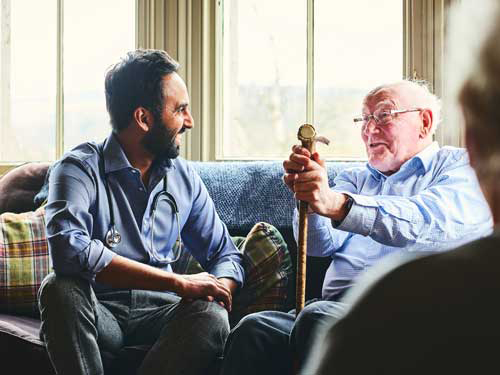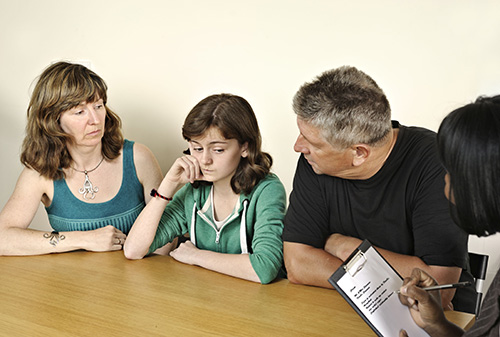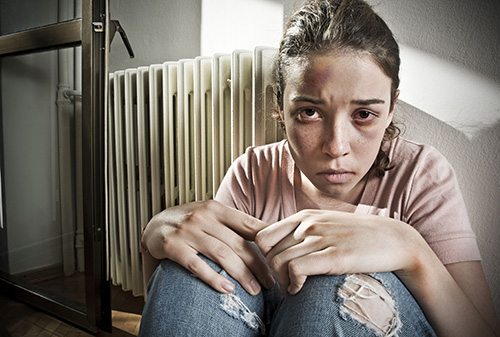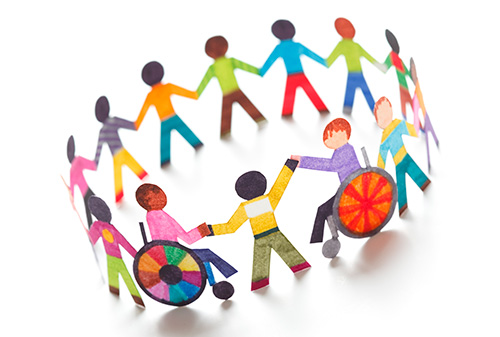




Actions, behaviours or situations that increase the risk of harm, abuse or neglect:
Gallai gweithredoedd, ymddygiadau neu sefyllfaoedd sy'n cynyddu'r risg o niwed neu gamdriniaeth gynnwys:

Harm, abuse or neglect can take place in any setting and so safeguarding procedures need to apply to a wide range of settings and circumstances including:
Gall niwed, camdriniaeth neu esgeulustod ddigwydd mewn unrhyw leoliad ac felly mae angen i weithdrefnau diogelu fod yn berthnasol i ystod eang o leoliadau ac amgylchiadau gan gynnwys:
Re-visit the list of actions, behaviours and situations that increase the risk of harm and abuse and choose one of them, e.g. domestic abuse, homelessness. Type the topic into a search engine such as Google.
What is it about the individual’s circumstances that makes them more at risk? Is it where they live, the setting in which they are supported, their particular needs? It is important that you are able to identify individuals who are especially at risk and why, in order to safeguard them effectively.
Ailystyriwch y rhestr o gamau gweithredu, ymddygiadau a sefyllfaoedd sy'n cynyddu'r risg o niwed a cham-drin a dewis un ohonynt, e.e. camdriniaeth domestig, digartrefedd. Teipiwch y pwnc i mewn i beiriant chwilio fel Google.
Beth yn benodol am amgylchiadau’r unigolyn sy'n eu gwneud nhw yn fwy agored i risg? Ai ble maen nhw'n byw, y lleoliad lle maen nhw'n cael eu cefnogi, eu hanghenion penodol? Mae'n bwysig eich bod yn gallu nodi unigolion sy'n arbennig o agored i risg a pham, er mwyn eu diogelu yn effeithiol.
Pam na chaiff camdriniaeth ei datgelu gan oedolion, plant a phobl ifanc, teulu, ffrindiau, gweithwyr a gwirfoddolwyr

The cycle of abuse might have become normalised in the setting or home. If there is a history of abuse in the household there is a higher chance of abuse in the next generation because they have never had an example of what a loving relationship is supposed to look like.
Reasons for not disclosing abuse can include:
These threats are real when abuse is taking place and the position of power is being misused.
Efallai bod y cylch o gamdriniaeth wedi cael ei normaleiddio yn y lleoliad neu'r cartref. Os oes tystiolaeth o gamdriniaeth yn y cartref yna mae siawns uwch o gamdriniaeth yn y genhedlaeth nesaf oherwydd nad ydynt wedi cael enghraifft o sut y dylai perthynas gariadus fod.
Gall rhesymau dros beidio â datgelu camdriniaeth hefyd gynnwys:
Mae'r bygythiadau hyn yn wir pan fydd camdriniaeth yn digwydd a phan fydd y safle o bŵer yn cael ei gamddefnyddio.
Watch the video BBC Panorama - Care Home Abuse.
Gwyliwch y fideo BBC Panorama - Care Home Abuse.

The term institutional or organisational abuse is the harm, treatment or neglect of an individual at risk by an organisation or group. Organisational abuse is more likely to happen when standards are poor, the lives of individuals are made to fit around a rota and routines or workers feel unsupported by their management. This can lead to a way of working that everyone will begin to see as acceptable. They do not try to challenge the situation because they are afraid of speaking out about what is being accepted by the majority. In addition, where workers have not been trained and supported to minimise restrictive practices and use positive approaches to address possible underlying causes of behaviours, this could increase the risk of harm and abuse.
Extra training is very important when dealing with particular care and support needs of an individual, such as a sensory impairment, a mental health issue, dementia or a learning disability. A reaction could be taken as a symptom of their condition rather than an attempt to tell someone what is happening to them. This confusion could lead to harm and abuse.
Mae'r term camdriniaeth sefydliadol neu gyfundrefnol yn golygu niwed, triniaeth neu esgeulustod a brofir gan unigolyn sydd mewn perygl gan sefydliad neu grŵp. Mae camdriniaeth sefydliadol yn fwy tebygol o ddigwydd pan fydd safonau'n wael, gorfodir i fywydau unigolion ffitio o amgylch rota ac arferion neu pan mae gweithwyr yn teimlo nad yw eu rheolwyr yn eu cefnogi. Gall hyn arwain at ddull o weithio a fydd yn dechrau cael ei ystyried yn dderbyniol gan bawb. Nid ydynt yn ceisio herio'r sefyllfa oherwydd bod arnynt ofn siarad am yr hyn sy'n cael ei dderbyn gan y mwyafrif. Yn ogystal, lle nad yw gweithwyr wedi cael eu hyfforddi a'u cefnogi i leihau arferion cyfyngol a defnyddio ymagweddau cadarnhaol i fynd i'r afael ag achosion sylfaenol posibl o ymddygiadau, gallai hyn gynyddu'r risg o niwed a cham-drin.
Mae hyfforddiant ychwanegol yn bwysig iawn wrth ddelio gydag anghenion gofal a chymorth penodol unigolyn, fel nam ar y synhwyrau, mater iechyd meddwl, dementia neu anabledd dysgu. Gallai ymateb gael ei ystyried fel symptom o'u cyflwr yn hytrach nag ymgais i ddweud wrth rywun beth sy'n digwydd iddyn nhw. Gallai'r dryswch hwn arwain at niwed neu gamdriniaeth.

Online perpetrators frequent places where adults, children or young people are present. This includes gaming websites, social networks (such as Facebook, Tumblr and Twitter) and chatrooms. Predators often take on a false identity and may pretend to be someone closer to the child's age or someone the child, young person or adult might admire such as a celebrity. The predator will look at what the adult, child or young person posts, their likes and dislikes and what activities they are involved in. This information is used to quickly establish a connection and trust with the adult, child or young person. The predator will aim to persuade the adult, child or young person to send them explicit images and may also try to meet them in person.
Perpetrators often use fear or embarrassment to keep an adult, child or young person from telling another individual about the abuse. They may use statements, such as “No one will believe you”, or threaten them with danger to keep them from telling.
Mae tramgwyddwyr ar-lein yn ymweld â mannau lle mae oedolion, plant neu bobl ifanc yn bresennol. Mae'r rhain yn cynnwys gwefannau gemau cyfrifiadurol, rhwydweithiau cymdeithasol (fel Facebook, Tumblr a Twitter) ac ystafelloedd sgwrsio. Yn aml, mae tramgwyddwyr yn creu hunaniaeth ffug a gallant esgus bod yn rhywun sydd yn nes at oedran y plentyn neu'n rhywun mae'r plentyn, y person ifanc neu'r oedolyn o bosibl yn ei edmygu, fel enwogion. Bydd y tramgwyddwr yn edrych ar yr hyn mae'r oedolyn, y plentyn neu'r person ifanc yn ei bostio, yr hyn maen nhw'n ei hoffi ac yn ei gasáu a pha weithgareddau maen nhw'n cymryd rhan ynddyn nhw. Defnyddir y wybodaeth hon i sefydlu cysylltiad ac ymddiriedaeth sydyn gyda'r oedolyn, y plentyn neu'r person ifanc. Bydd y tramgwyddwr yn ceisio perswadio'r oedolyn, y plentyn neu'r person ifanc i anfon delweddau cignoeth ac efallai y byddant hefyd yn ceisio eu cyfarfod yn bersonol.
Yn aml, mae tramgwyddwyr yn defnyddio ofn neu gywilydd i atal oedolyn, plentyn neu berson ifanc rhag dweud wrth unigolyn arall am y gamdriniaeth. Gallant ddefnyddio datganiadau, fel "Ni fydd unrhyw un yn dy gredu", neu eu bygwth gyda pherygl i'w atal rhag dweud.
Cyfarwyddiadau cyflwyno gweithgareddau.
Watch the video Emily's Story - Online Grooming.
Gwyliwch y fideo Stori Emily - Meithrin Perthynas Amhriodol Ar-lein.

Part 7 of the Social Services and Well-being (Wales) Act requires a Safeguarding Children Board to carry out multi-agency Child Practice Reviews and a Safeguarding Adult Board to carry out multi-agency Adult Practice Reviews in specific situations. Extended reviews might also have to be undertaken and they take place under other criteria.
A Practice Review is held if:
Practice reviews are held to enable professionals and organisations to learn from what happened to inform their future practice and safeguarding procedures. The views of the individual and their family, carers and others significant to them are taken into account wherever possible and as appropriate.
Examples of Child and Adult Practice Review reports can be found on the National Independent Safeguarding Board Wales website:
Mae Rhan 7 Deddf Gwasanaethau Cymdeithasol a Llesiant (Cymru) yn ei wneud yn ofynnol i Fwrdd Diogelu Plant gynnal Adolygiadau Ymarfer Plant amlasiantaethol ac i Fwrdd Diogelu Oedolion gynnal Adolygiadau Ymarfer Oedolion amlasiantaethol mewn sefyllfaoedd penodol. Hefyd efallai y bydd rhaid cynnal adolygiadau estynedig a byddant yn digwydd o dan feini prawf eraill.
Cynhelir Adolygiad Ymarfer os yw:
Cynhelir adolygiadau ymarfer i alluogi gweithwyr proffesiynol a sefydliadau i ddysgu o'r hyn a ddigwyddodd i lywio eu harferion a'u gweithdrefnau diogelu yn y dyfodol. Mae safbwyntiau'r unigolyn a'i deulu, gofalwyr ac eraill sy'n arwyddocaol iddynt yn cael eu hystyried lle bynnag mae hynny'n bosibl ac fel sy'n briodol.
Gellir gweld enghreifftiau o adroddiadau Adolygiad Ymarfer Plant ac Oedolion ar wefan Bwrdd Diogelu Annibynnol Cenedlaethol Cymru:
http://bwrdddiogelu.cymru/practice-reviews/?noredirect=cy_GB
We have all read about the shocking deaths of Jessica Chapman, Holly Wells and Victoria Climbié; and you will have also heard about Baby P, and the victims of Clinton House in St Austell, Cornwall and Winterbourne View care home in Bristol.
Go onto the National Independent Safeguarding Board Wales website:
http://safeguardingboard.wales/practice-reviews/
Have a scan through some of the Practice Review reports and look at the circumstances of some of the cases. You will need to scroll on the tabs at the bottom.
Rydyn ni i gyd wedi darllen am farwolaethau syfrdanol Jessica Chapman, Holly Wells a Victoria Climbié a byddwch hefyd wedi clywed am Baby P, a dioddefwyr Clinton House yn St Austell, Cernyw a chartref gofal Winterbourne View ym Mryste.
Ewch i wefan Bwrdd Diogelu Annibynnol Cenedlaethol Cymru:
Sganiwch drwy rai o adroddiadau'r Adolygiad Ymarfer ac edrych ar amgylchiadau rhai o'r achosion. Bydd angen i chi sgrolio ar y tabiau ar y gwaelod.